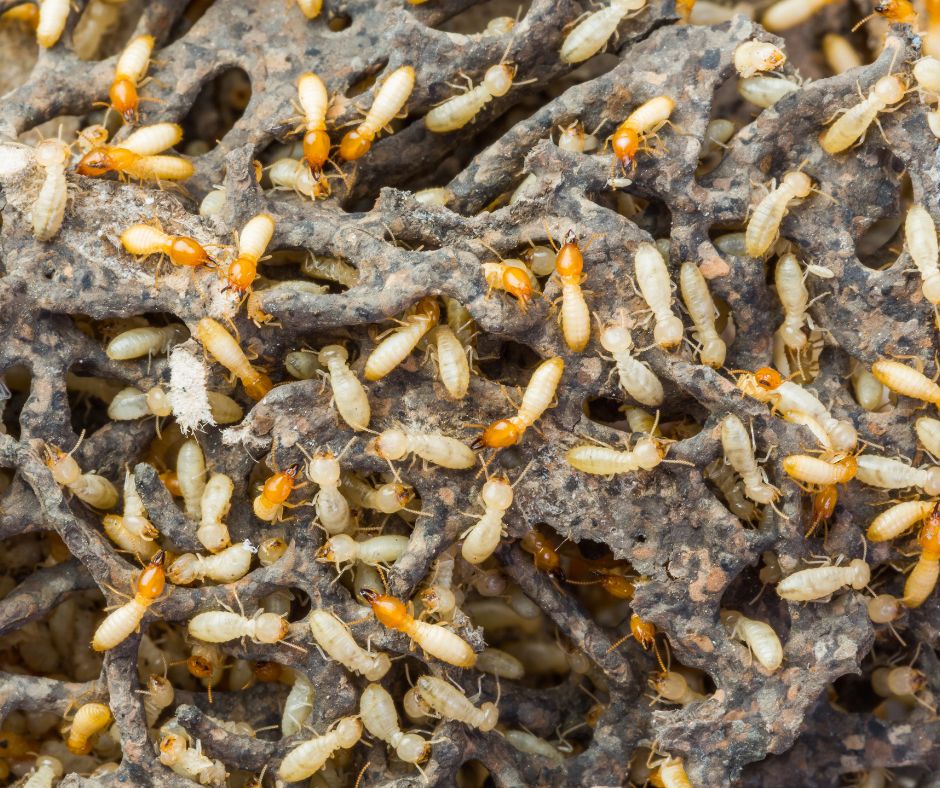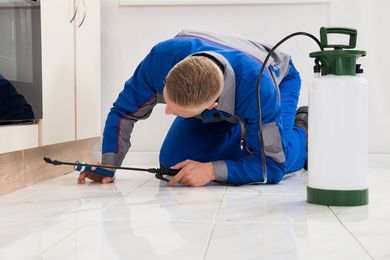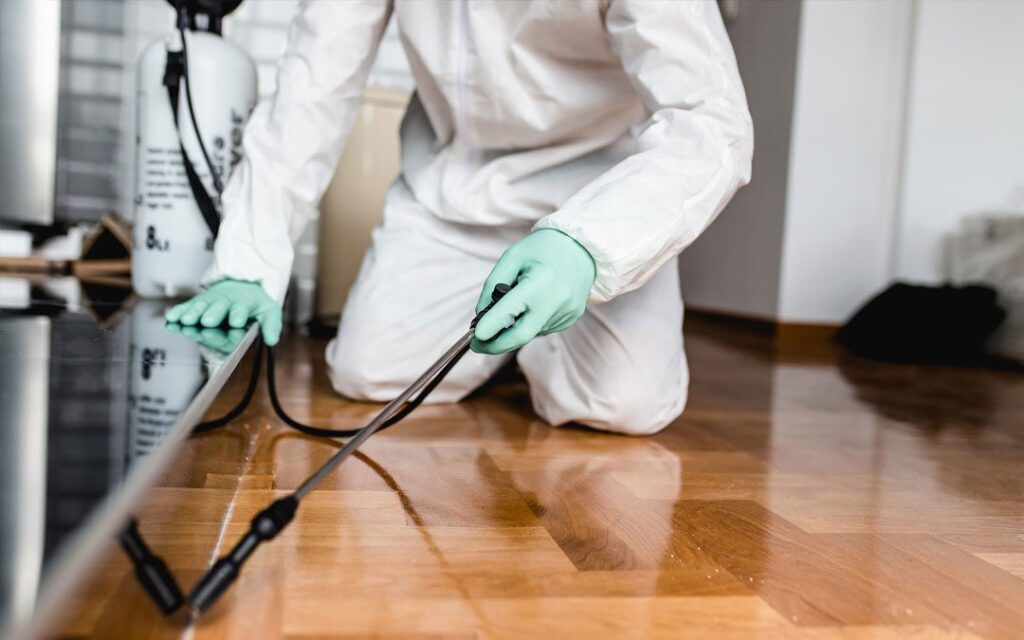Top-Quality Pest Control in Charlotte County FL
Top-Quality Pest Control in Charlotte County FL
Blog Article
Comprehensive Overview to Recognizing Bug Control Techniques and Their Therapy
Understanding parasite control techniques is vital for reliable administration of unwanted microorganisms that position dangers to wellness, farming, and building. This extensive guide will certainly explore various methods, including chemical remedies, biological techniques, and mechanical strategies, all under the umbrella of Integrated Bug Administration (IPM) As we check out these methods, it comes to be increasingly clear that the choice of method can substantially affect both human rate of interests and environmental balance. What variables should be thought about when picking the ideal pest control method for a specific scenario? The answer may result in even more lasting practices than one might initially think.
Introduction of Insect Control Approaches
Bug control approaches incorporate a selection of methods developed to handle and eliminate undesirable microorganisms that can damage human health, agriculture, and residential or commercial property. Efficient parasite administration is crucial for maintaining the honesty of environments and guaranteeing the safety of food supplies. These approaches can be generally classified right into 3 key approaches: cultural, mechanical, and organic controls.

Cultural control involves modifying farming practices or ecological conditions to minimize pest facility and recreation. Mechanical control depends on physical obstacles or tools to protect against parasite accessibility or directly remove them.
Organic control makes use of natural killers, bloodsuckers, or microorganisms to control pest populaces. This method stresses eco-friendly equilibrium and can include introducing beneficial bugs, such as ladybugs or predacious nematodes, to manage insect existence.
Integrated insect management (IPM) incorporates these methods, utilizing an all natural technique that highlights prevention, surveillance, and accountable management. By using a blend of these methods, bug control can be much more sustainable and reliable, lessening reliance on chemical treatments while protecting human health and the setting.

Chemical Parasite Control Solutions
A selection of chemical insect control solutions are readily available, offering efficient choices for managing pest populaces when various other methods may fail. These solutions largely include pesticides, herbicides, fungicides, and rodenticides, each made to target particular parasites while minimizing damage to non-target microorganisms.
Pesticides are particularly efficient against an array of bugs, consisting of ants, cockroaches, and termites, and can be categorized as contact or systemic agents. Get in touch with insecticides eliminate parasites on call, while systemic insecticides are absorbed by plants, making them hazardous to pests that feed on them. Herbicides are utilized to control undesirable plant life, whereas fungicides are important for handling fungal conditions that can damage crops and ornamental plants.
Additionally, incorporated parasite administration (IPM) principles should be employed, incorporating chemical options with cultural, mechanical, and biological approaches for lasting parasite control. This alternative method not only boosts pest administration effectiveness but additionally minimizes potential environmental influences connected with chemical usage.
Organic Insect Control Techniques
Organic parasite control methods provide an eco-friendly alternative to chemical approaches by using all-natural predators, bloodsuckers, or microorganisms to manage bug populations. This technique leverages the environmental partnerships between microorganisms, promoting a balanced community while reducing chemical residue in the setting.
One of the most typical biological control methods involves the intro of all-natural adversaries. For example, ladybugs are used to manage aphid populations, while parasitic wasps can target caterpillars and various other insects. These natural killers efficiently lower pest numbers without harming beneficial pests.
Additionally, microbial representatives such as bacteria, fungi, and infections are used to contaminate and eliminate particular bugs. Bacillus thuringiensis (Bt), a normally occurring microorganism, is commonly made use blog of to regulate caterpillars and other larvae, showcasing the efficiency of microbial bug control.

Physical and Mechanical Methods
Often used in integrated parasite administration strategies, physical and mechanical techniques serve as effective tools for regulating insect populaces without the use of chemicals. These techniques count on physical obstacles, traps, and other mechanical devices to stop or get rid of pests, making them eco-friendly choices.
Physical methods consist of using obstacles such as insect netting, screens, or row covers that literally block insects from accessing plants. This is specifically valuable in farming setups view it where crop defense is vital. In addition, environment adjustment, such as getting rid of particles and standing water, can decrease bug reproducing websites, consequently reducing invasions.
Mechanical methods encompass catches, which can be designed to capture certain bugs. Sticky catches and scent traps are usual instances that entice and preserve pests, helping with monitoring and control. Vacuuming is an additional mechanical method, effective for eliminating bugs from indoor settings, particularly in cases of infestations.
Preventative Pest Management Strategies
Efficient preventative insect management methods are crucial for preserving healthy atmospheres and decreasing pest-related problems prior to they emerge (Pest Control in Port Charlotte, FL). These strategies focus on positive procedures that minimize the chance of pest problems by resolving the source

One more vital approach includes appropriate landscaping practices (Pest Control in Port Charlotte, FL). Keeping plant life trimmed and away from structures can lower harborage areas for pests. Similarly, applying incorporated parasite management (IPM) strategies that include checking parasite populaces and using biological controls can promote a well balanced ecosystem that normally subdues pest numbers.
Education and learning and training for staff and citizens on acknowledging very early indications of insect activity are additionally crucial components of an effective preventative program. By fostering a setting of understanding and vigilance, organizations and house owners can considerably enhance their pest administration initiatives and safeguard their spaces versus future invasions.
Conclusion
Utilizing an Integrated Pest Administration (IPM) structure enables for the lasting management of pests while lessening ecological impact. Eventually, a thorough understanding of these varied parasite control methods is vital for achieving successful results in parasite management initiatives.
Report this page